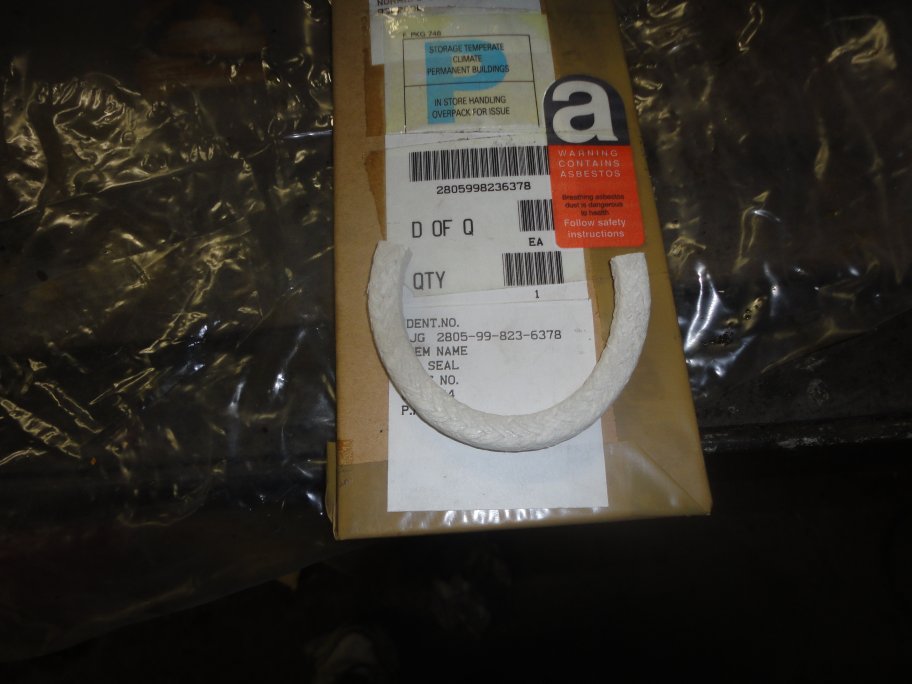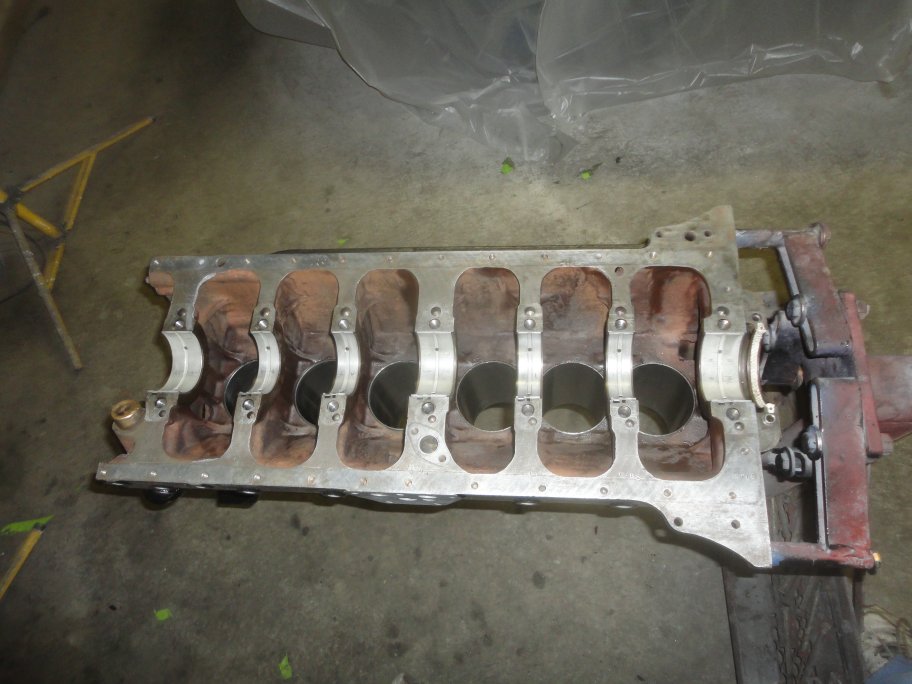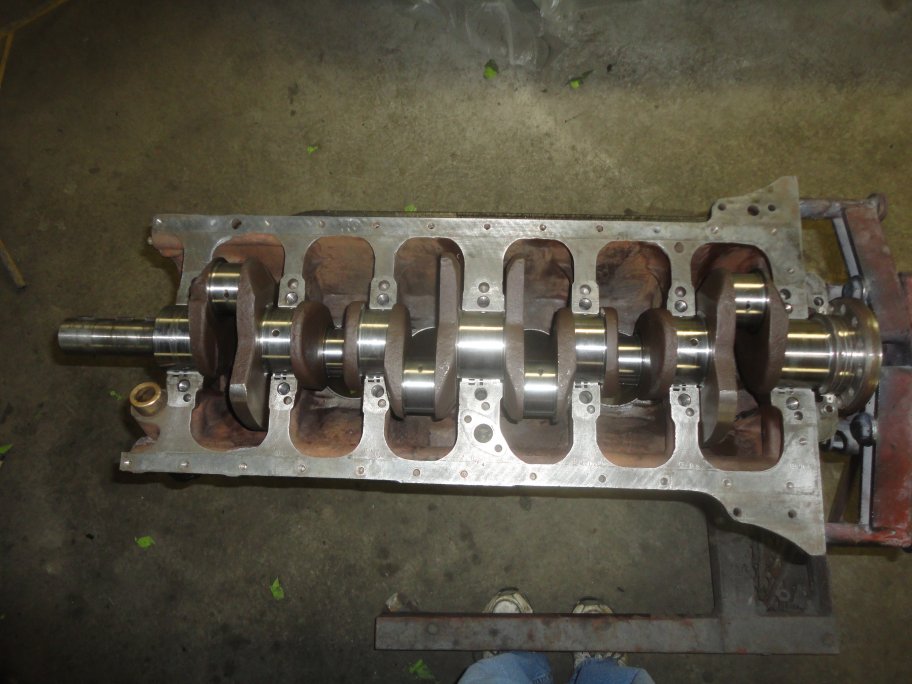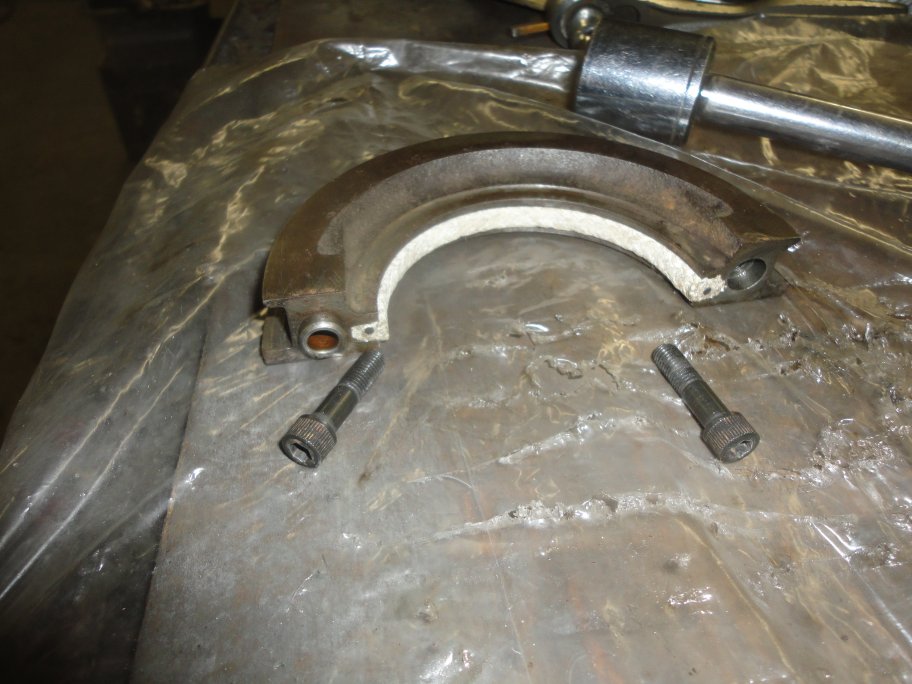 14) The great thing about the 3.8L & 4.2L engines is that you can replace the rear main seal without removing the crank.
The first thing that gets installed is the upper half of the rear main seal. A bracket is attached to the rear oft he block
using socket head screws.
14) The great thing about the 3.8L & 4.2L engines is that you can replace the rear main seal without removing the crank.
The first thing that gets installed is the upper half of the rear main seal. A bracket is attached to the rear oft he block
using socket head screws.
|
 15) The seal itself is made from asbestos. Just breath in the mesothelioma!
15) The seal itself is made from asbestos. Just breath in the mesothelioma!
|
 16) It is just packed in a groove with the ends sticking out a little. The service manual says to install the other half, and insert a special
tool to get it to seat properly. I used a deepwell socket rocked across the seal to get it to seat and then used the crank by only tightening down the rear main
bearing cap and spinning it.
16) It is just packed in a groove with the ends sticking out a little. The service manual says to install the other half, and insert a special
tool to get it to seat properly. I used a deepwell socket rocked across the seal to get it to seat and then used the crank by only tightening down the rear main
bearing cap and spinning it.
|
 17) Here it is with the main bearings inserted into the block. Some people like to coatthe inside of the block with glyptol to seal the pores in the block and
get the oil flowing better, but the original factory primer looked pretty good to me.
17) Here it is with the main bearings inserted into the block. Some people like to coatthe inside of the block with glyptol to seal the pores in the block and
get the oil flowing better, but the original factory primer looked pretty good to me.
|
 18) The cranks is shown here set it place. The crank and bearings were coated with motor oil.
18) The cranks is shown here set it place. The crank and bearings were coated with motor oil.
|
 19) The crank endplay is set using special U-shaped shims that are on either side of the center main bearing cap. There are only a couple of sizes to choose from
but you they both do not need to be the same. In my case I only needed to use the standard size.
19) The crank endplay is set using special U-shaped shims that are on either side of the center main bearing cap. There are only a couple of sizes to choose from
but you they both do not need to be the same. In my case I only needed to use the standard size.
|
 20) Here is the bottom half of the rear main seal, packed and ready to install.
20) Here is the bottom half of the rear main seal, packed and ready to install.
|